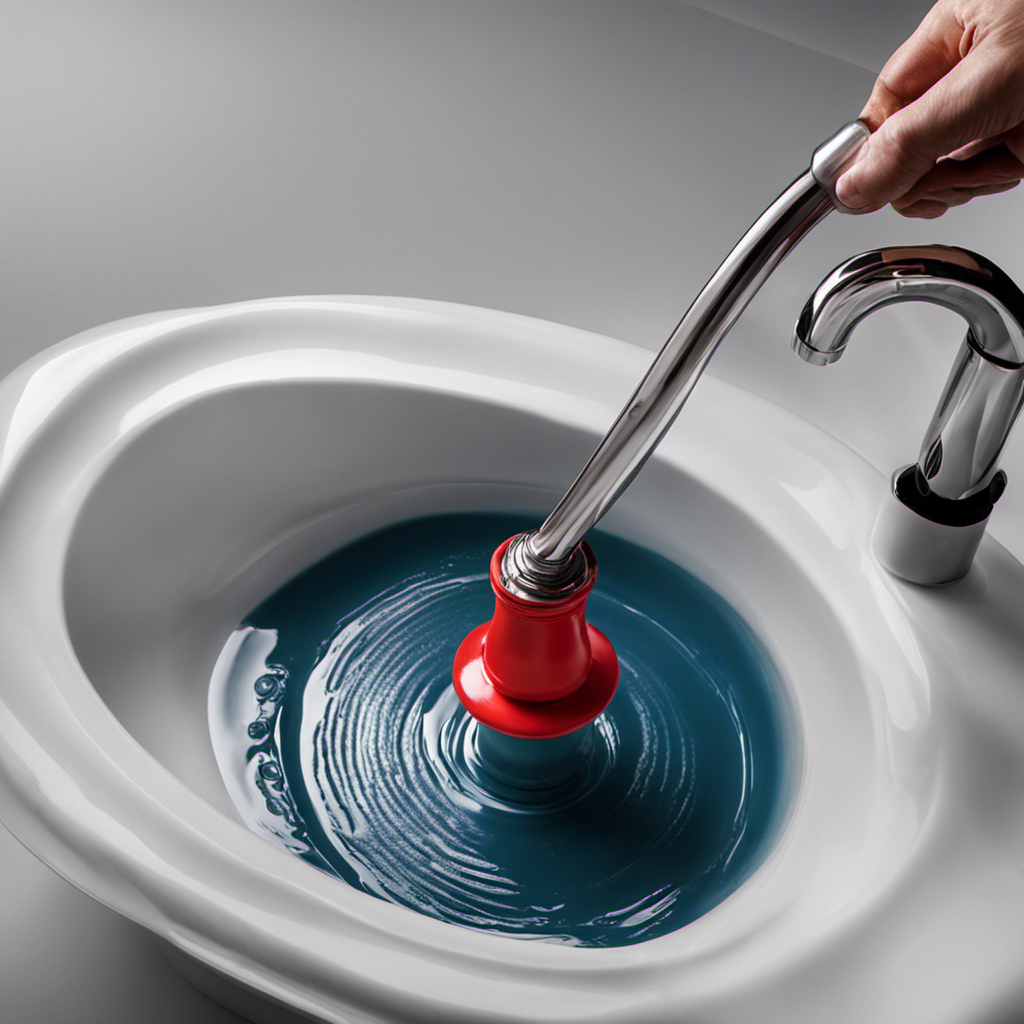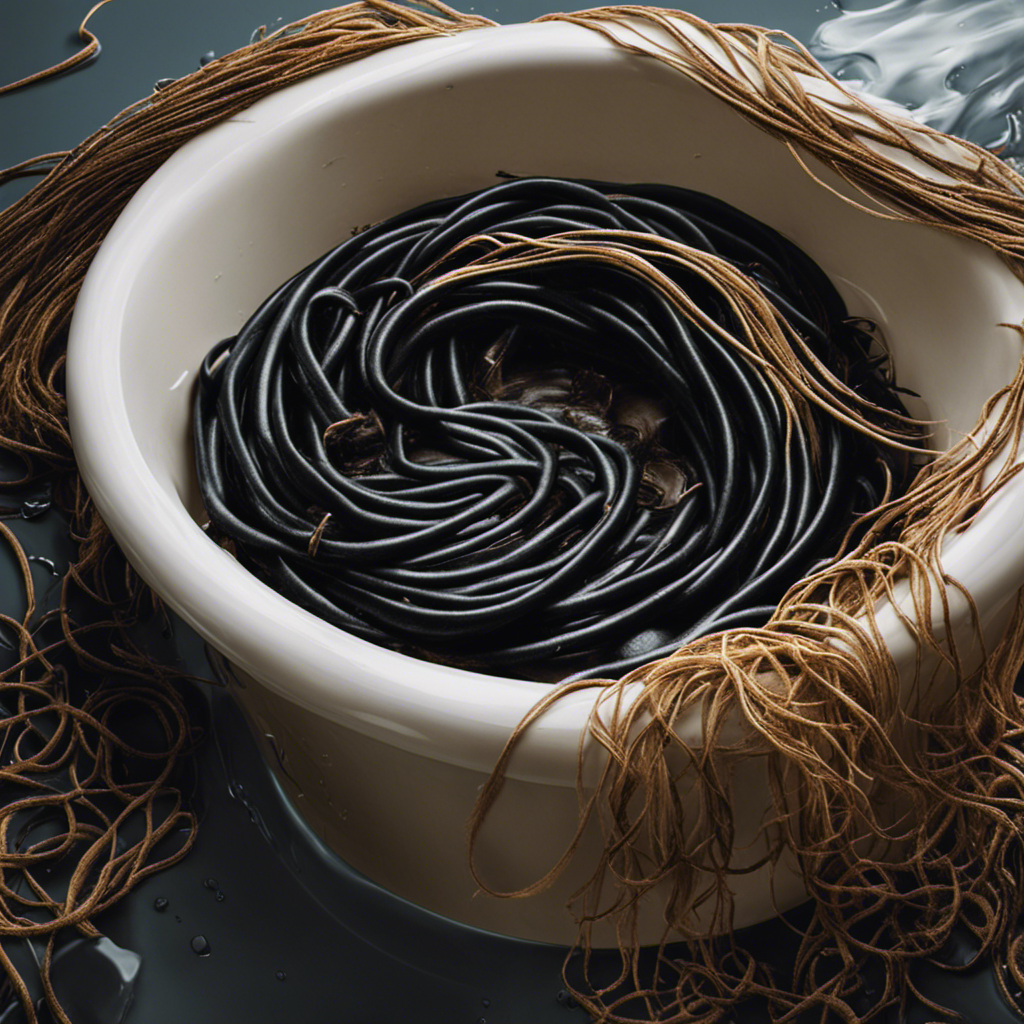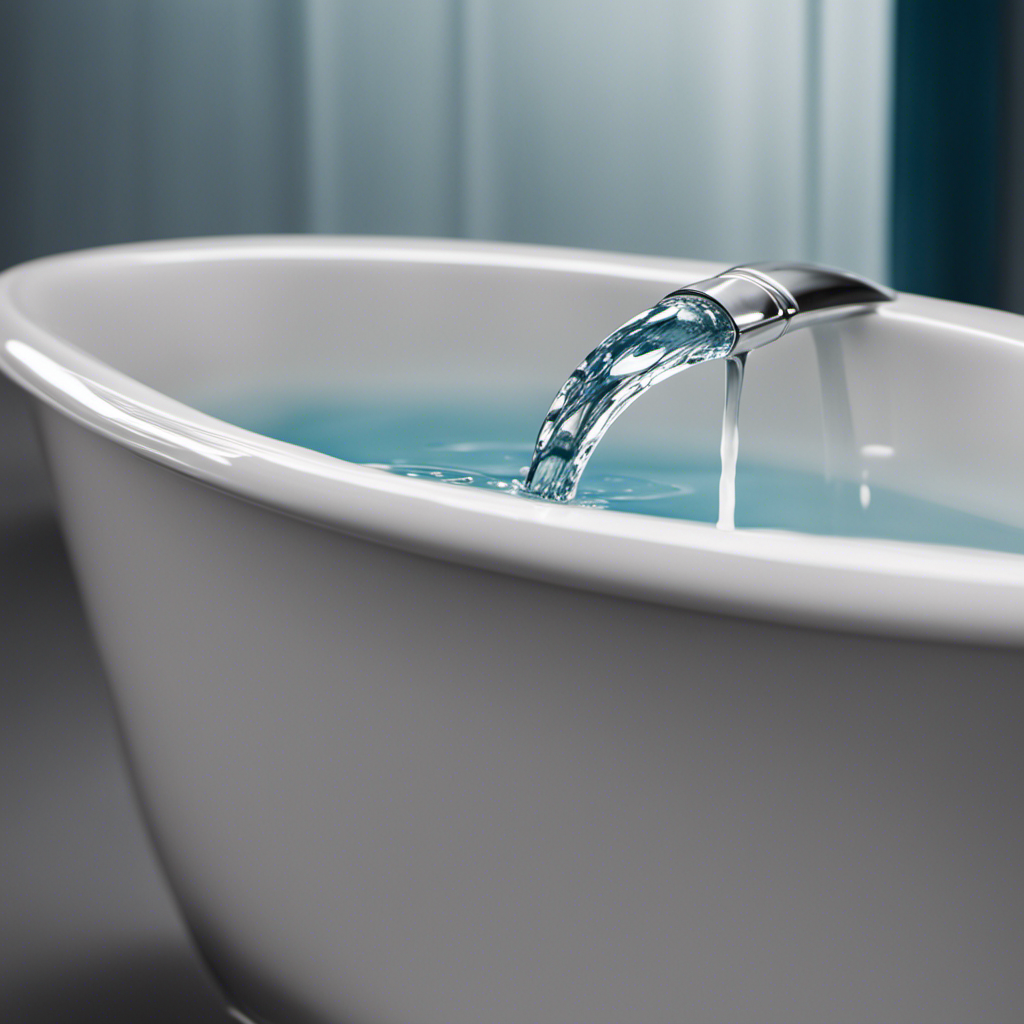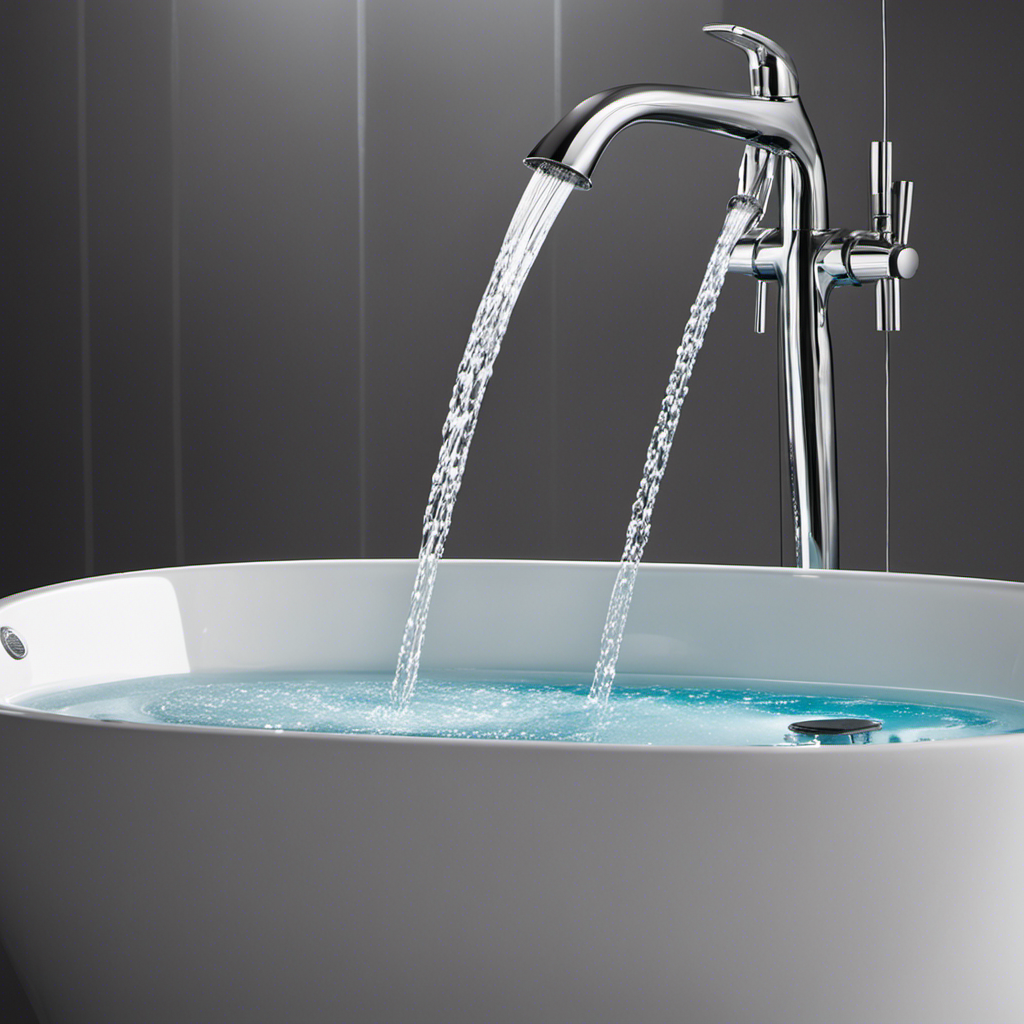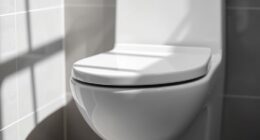If you’re standing ankle-deep in water every time you take a shower, it’s time to tackle that stubborn clog in your bathtub drain. Don’t fret, because with the right tools and a little know-how, you can unclog it yourself.
In this article, we’ll show you how to use a plunger to clear a clogged bathtub drain with standing water. Say goodbye to the frustration and hello to a smoothly flowing drain in no time!
Key Takeaways
- Slow drainage and water pooling around your feet are signs of a clogged bathtub drain.
- Hair buildup, soap residue, and foreign objects are common causes of clogs.
- Using a plunger with a large rubber suction cup is an essential tool for unclogging the drain.
- If the plunger doesn’t work, a plumber’s snake or alternative methods like baking soda and vinegar can be used.
Understanding the Problem: Identifying a Clogged Bathtub Drain
To understand the problem, start by identifying if your bathtub drain is clogged. There are several signs that can indicate a clog in your bathtub drain.
One common sign is slow drainage, where water takes longer than usual to go down the drain. Another sign is water pooling around your feet while taking a shower or bath. If you notice these signs, it is likely that your bathtub drain is clogged.
There are various causes of bathtub drain clogs, such as hair buildup, soap residue, and foreign objects like small toys or jewelry.
Now that you have identified the clog, it’s time to gather the tools you’ll need to unclog a bathtub drain with a plunger.
Gathering the Tools: What You’ll Need to Unclog a Bathtub Drain With a Plunger
First, make sure you have all the necessary tools ready for tackling a clogged bathtub drain with a plunger. Here are the key items you’ll need:
- A plunger: Choose a plunger with a large rubber suction cup that can create a tight seal over the drain.
- Rubber gloves: Protect your hands from any debris or dirty water that may come up from the drain.
- A bucket: Use this to collect any water that may overflow during the unclogging process.
- A plumber’s snake: If the plunger doesn’t work, a snake can help remove any stubborn clogs deeper in the drain.
- Hot water: Boiling water can help break up and flush away any remaining blockages.
To effectively use a plunger to unclog a bathtub drain, follow these techniques:
- Fill the tub with enough water to cover the plunger’s cup.
- Place the plunger over the drain, ensuring a tight seal.
- Push and pull the plunger vigorously to create suction and dislodge the clog.
- Repeat the plunging motion several times to break up the blockage.
- Test the drain by running water; if it’s still clogged, try the process again or use a plumber’s snake.
With the right tools and techniques, you can successfully unclog a bathtub drain using a plunger.
Step-By-Step Guide: How to Use a Plunger to Unclog a Bathtub Drain With Standing Water
Make sure you have the necessary tools and follow these step-by-step techniques for effectively using a plunger to clear a clog in your bathtub drain with standing water.
First, ensure that the plunger is clean and in good condition. Place it directly over the drain, making sure it covers the entire opening.
Push down firmly and then pull up quickly to create a strong suction. Repeat this motion several times to dislodge the clog.
If the water doesn’t drain after a few attempts, you can try alternative methods such as using a drain snake or a homemade mixture of baking soda and vinegar.
Remember to take safety precautions by wearing gloves and protective eyewear, and never use chemicals that may damage your plumbing.
Troubleshooting Tips: What to Do if the Plunger Method Doesn’t Work
If the plunger method isn’t successful, you might want to consider trying alternative techniques to resolve the clog in your bathtub drain. Here are some alternative solutions to help you unclog your drain:
-
Chemical Drain Cleaners: These products are designed to break down and dissolve clogs. Follow the instructions carefully and use them as directed.
-
Drain Snake: A flexible tool that can be inserted into the drain to physically remove the clog. Twist and push the snake until you feel resistance and then pull it out.
-
Vinegar and Baking Soda: Mix equal parts vinegar and baking soda and pour it down the drain. Let it sit for a few hours and then flush with hot water.
-
Wet/Dry Vacuum: Use a wet/dry vacuum to suck out the clog by creating a seal over the drain.
-
Calling a Professional: If all else fails, it may be time to call a professional plumber who has the expertise and tools to unclog your drain.
Preventive Measures: How to Avoid Future Clogs in Your Bathtub Drain
To prevent future clogs in your bathtub drain, regularly clean the drain cover and remove any hair or debris. Preventive maintenance is crucial in ensuring the smooth flow of water and avoiding costly repairs. Understanding the common causes of clogs can help you take proactive measures. Here is a table highlighting the common causes and preventive measures:
| Common Causes | Preventive Measures |
|---|---|
| Hair buildup | Use a drain cover or hair catcher |
| Soap scum | Rinse the drain with hot water regularly |
| Mineral deposits | Use a mixture of vinegar and baking soda |
| Foreign objects | Avoid flushing anything other than water |
Frequently Asked Questions
Can I Use a Plunger to Unclog a Bathtub Drain Without Standing Water?
You can use a plunger to unclog a bathtub drain without standing water. Using a plunger has many benefits, such as creating suction to dislodge the clog and being a cost-effective solution.
What Should I Do if the Plunger Method Doesn’t Work?
If the plunger method doesn’t work, try alternative solutions such as using a drain snake or a mixture of baking soda and vinegar. If all else fails, it’s best to call a professional plumber.
How Long Does It Usually Take to Unclog a Bathtub Drain Using a Plunger?
Using a plunger on a bathtub drain without standing water can still be effective. However, the time it takes to unclog a bathtub drain using a plunger typically depends on the severity of the clog and your technique.
Can I Use a Plunger on a Bathtub Drain That Has a Built-In Stopper?
To unclog a bathtub drain with a built-in stopper, you can use a plunger. Apply firm pressure and plunge vigorously for a few minutes. If that doesn’t work, consider using chemicals or hiring a professional.
Are There Any Alternative Methods to Unclog a Bathtub Drain if I Don’t Have a Plunger?
If you don’t have a plunger, there are alternative methods to unclog a bathtub drain. One option is to use a drain snake, which can be inserted into the drain to remove the blockage.
Conclusion
Congratulations! You’ve successfully learned how to unclog a bathtub drain with standing water using a plunger. Armed with the knowledge and tools, you can now tackle any clog that comes your way.
But remember, even the best techniques may not always work, so don’t panic if your first attempt doesn’t succeed. Just follow our troubleshooting tips and keep trying.
With a little perseverance and know-how, you’ll triumph over any stubborn clog. So go forth and conquer, fearless plumber!
